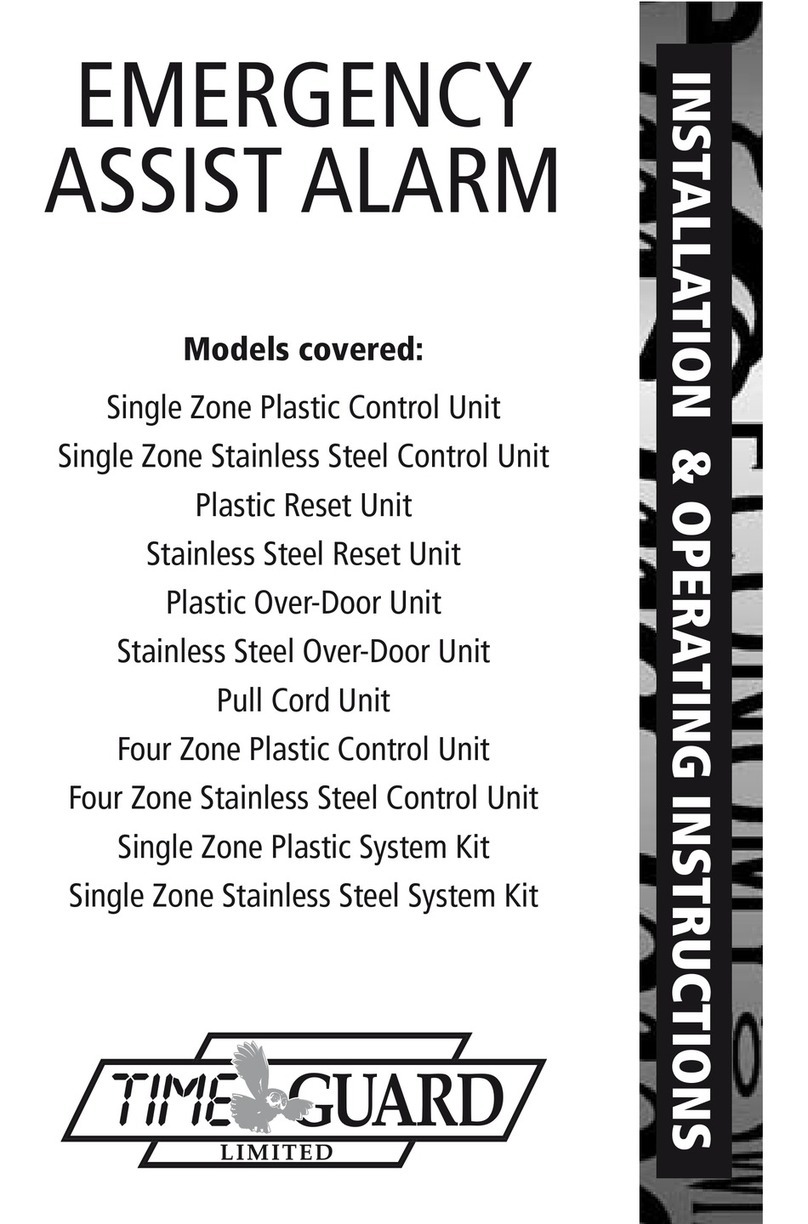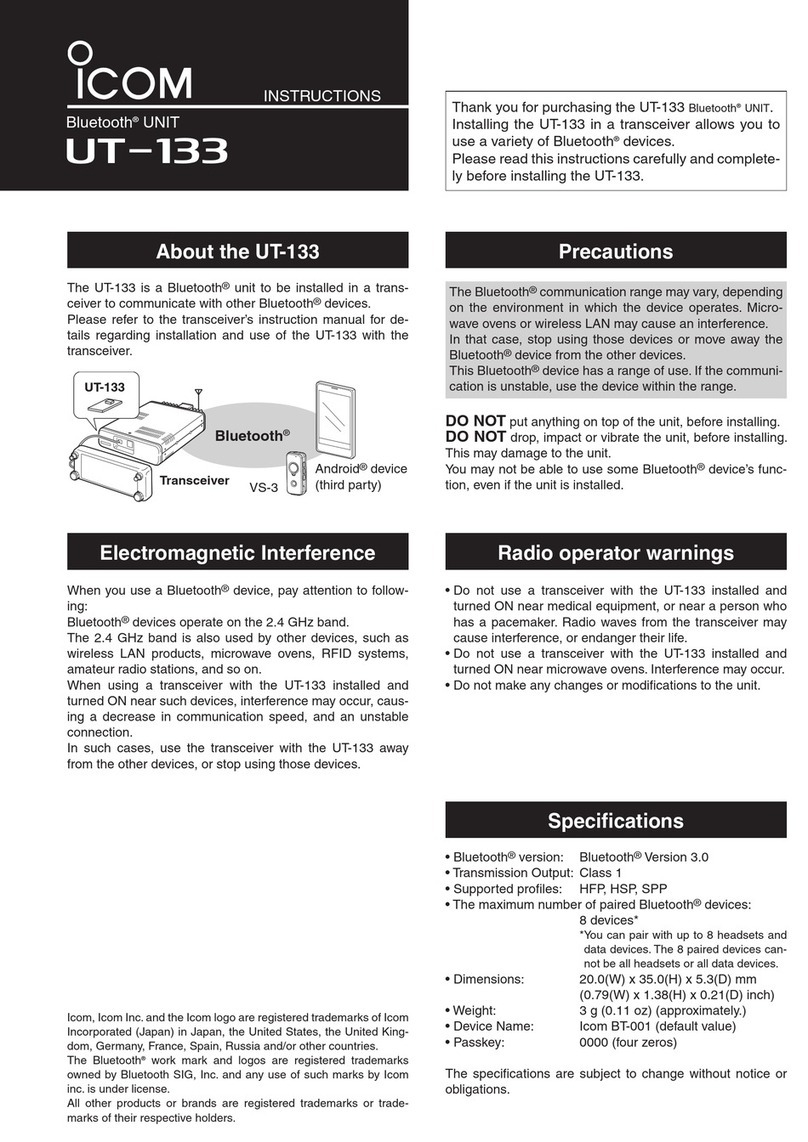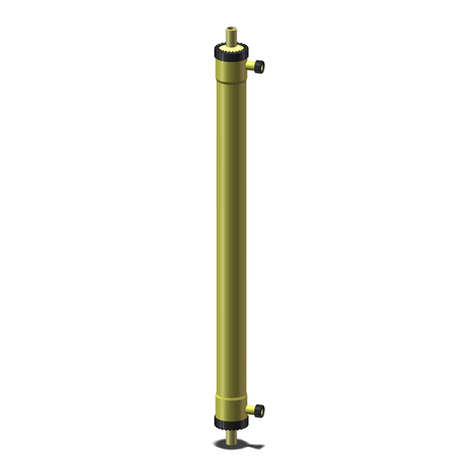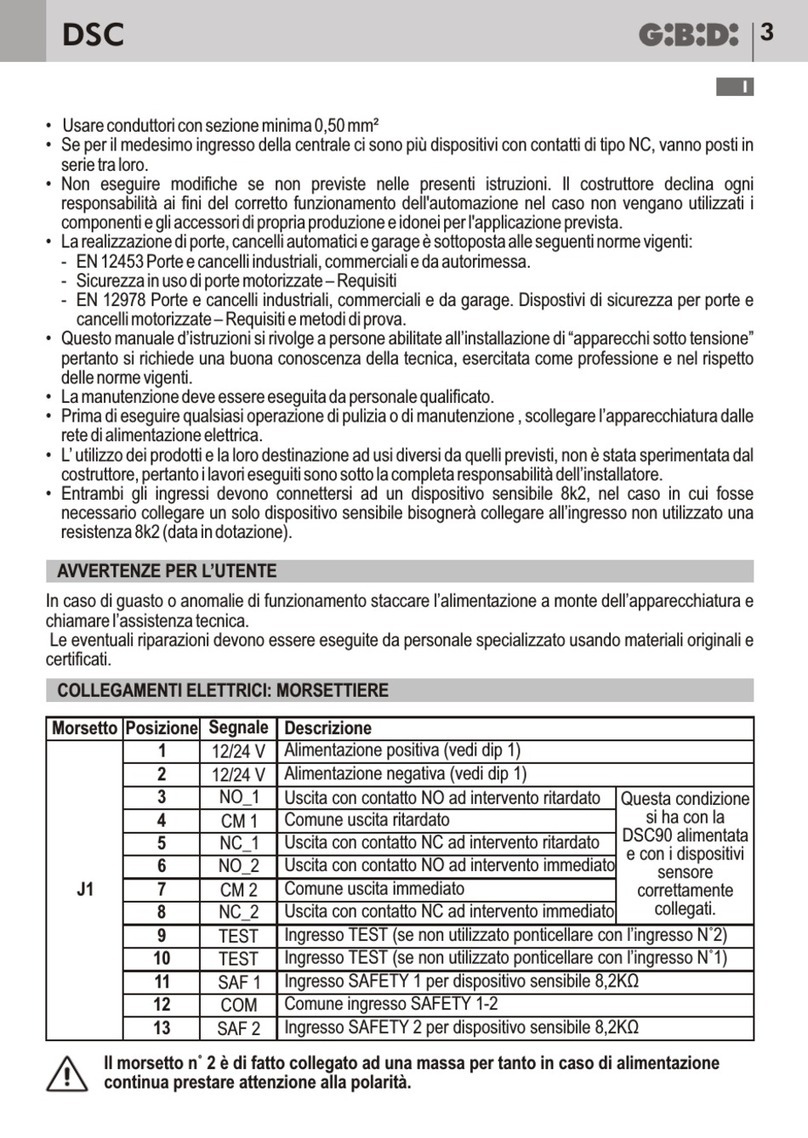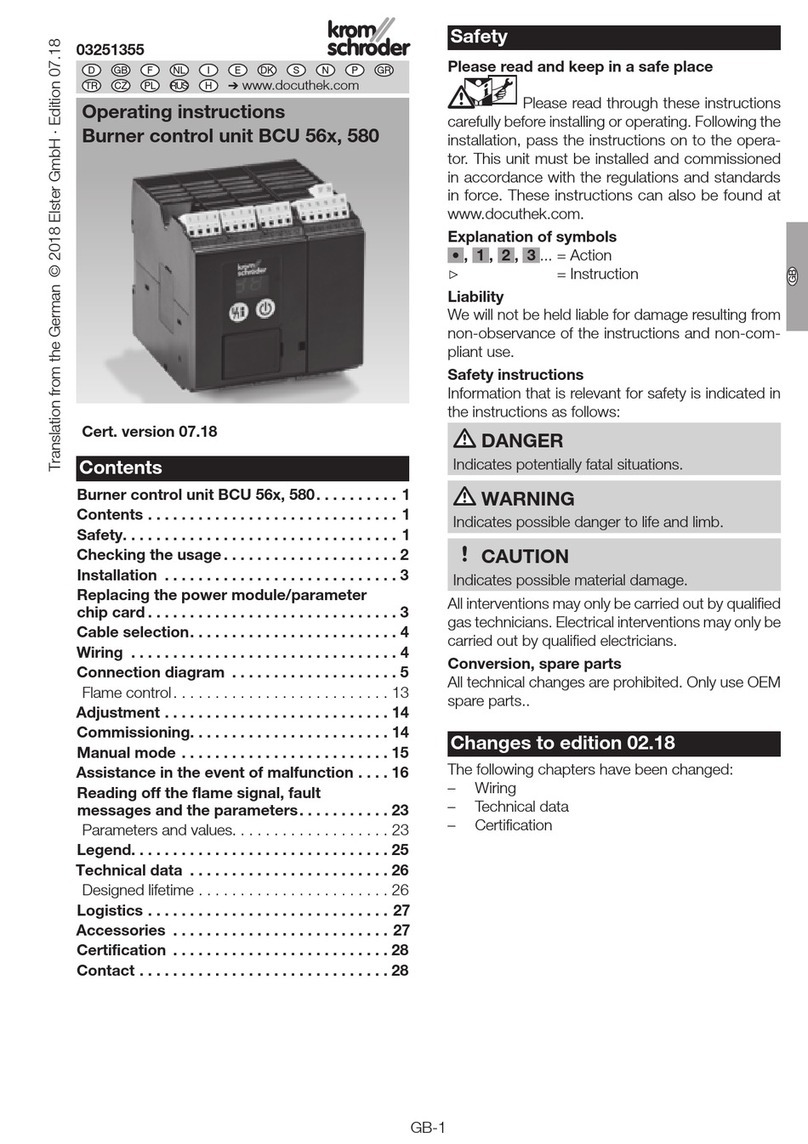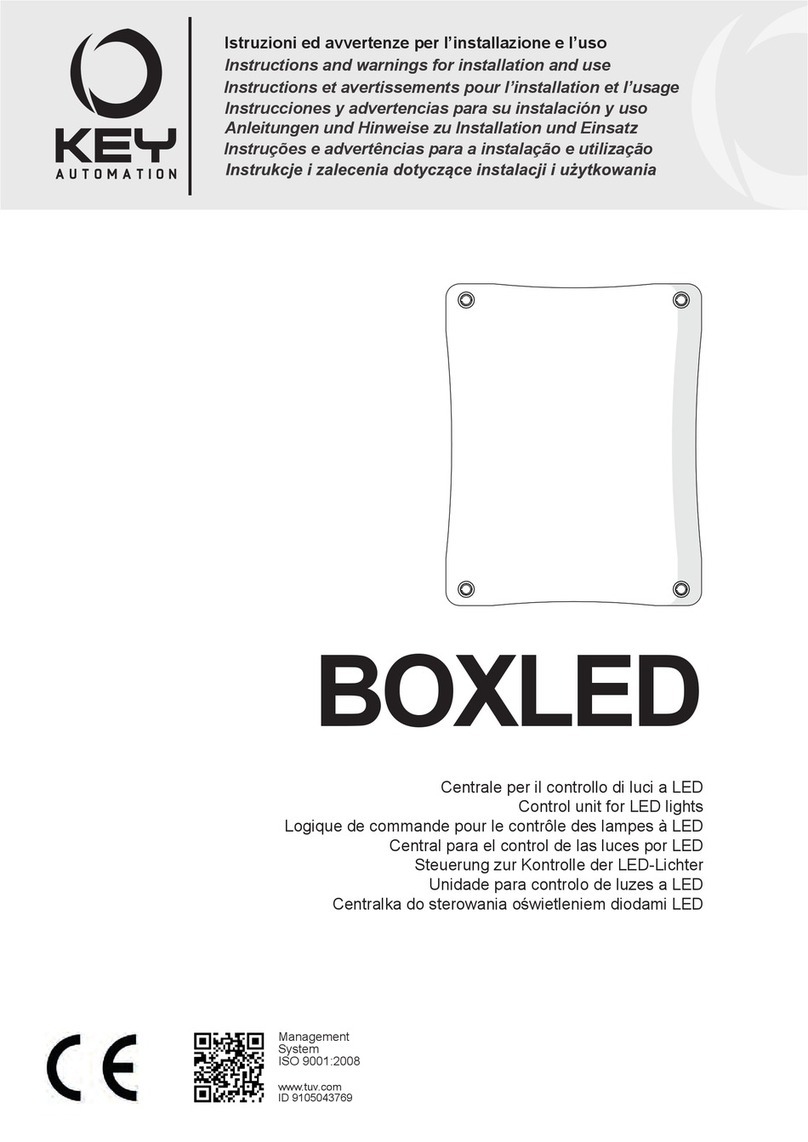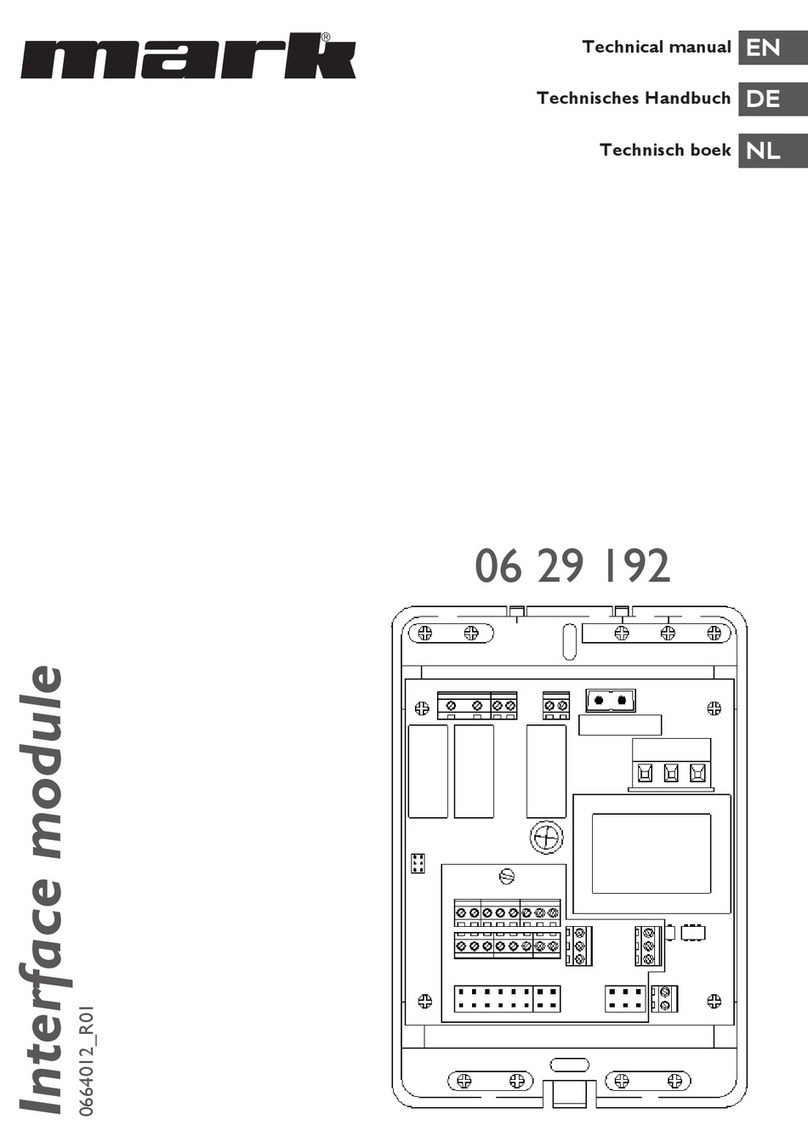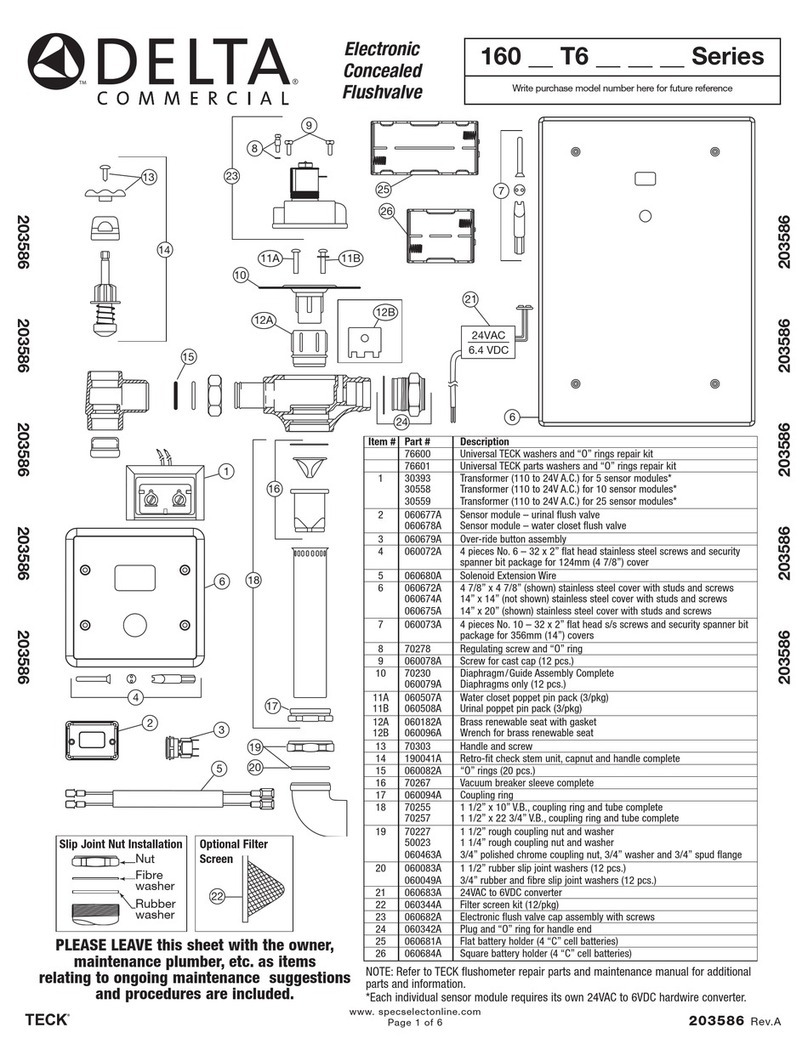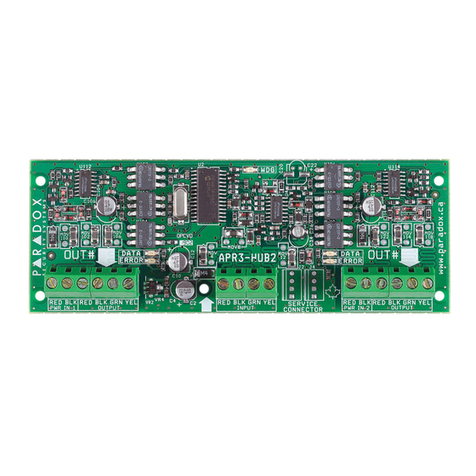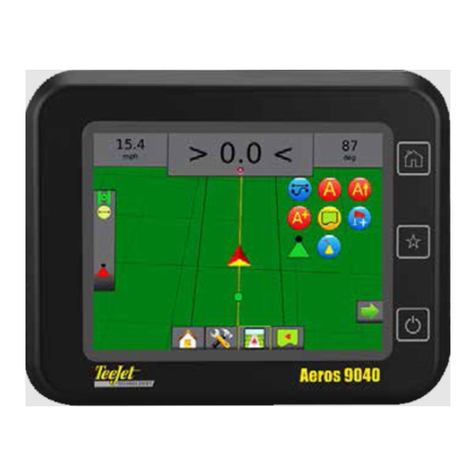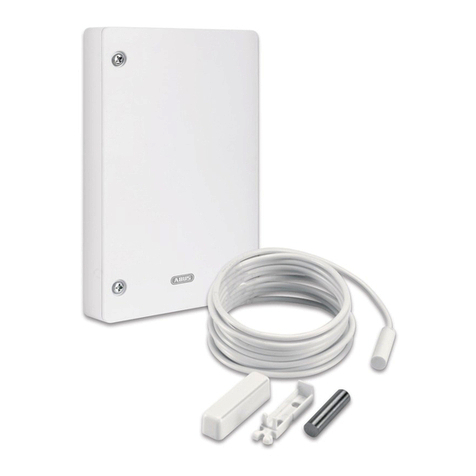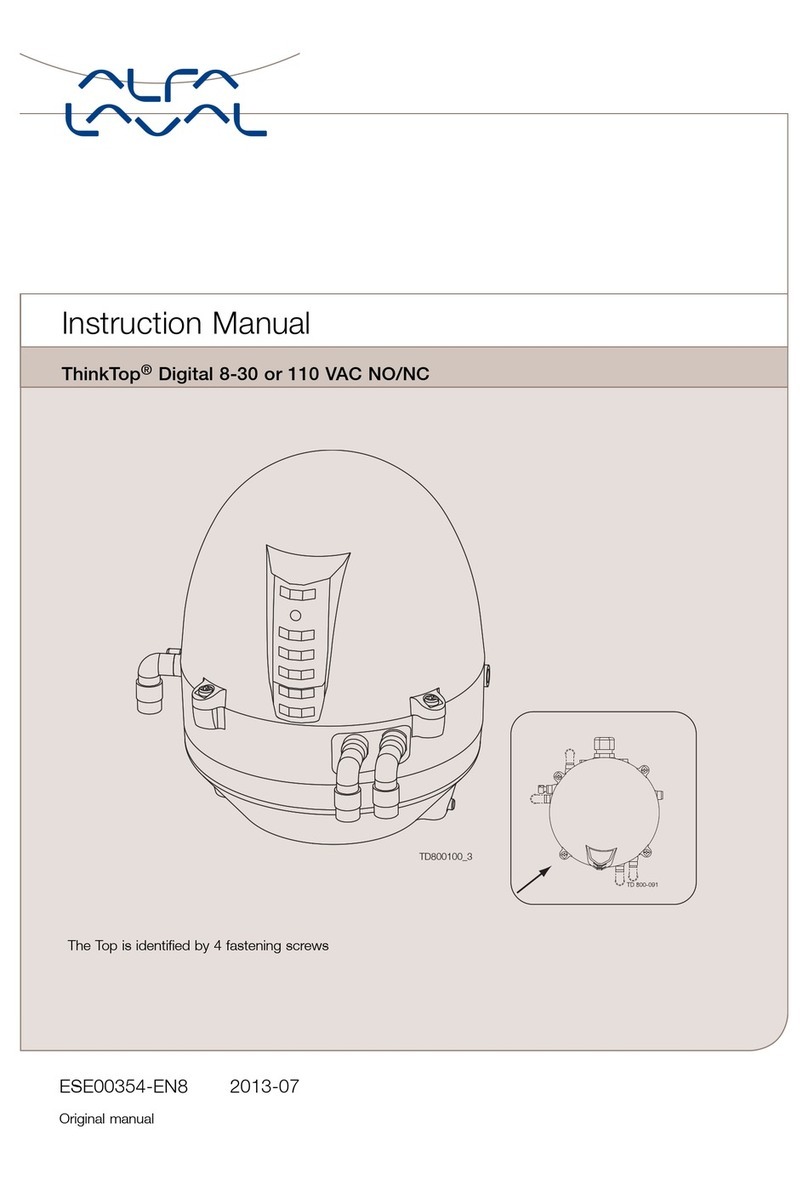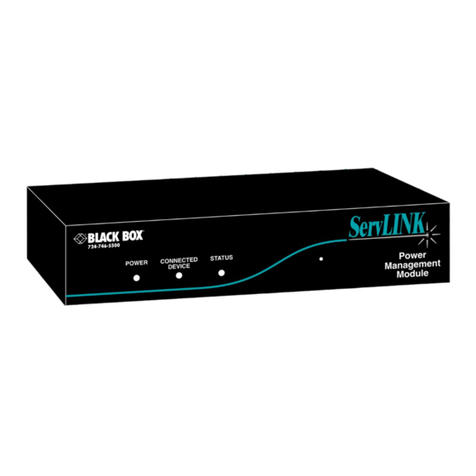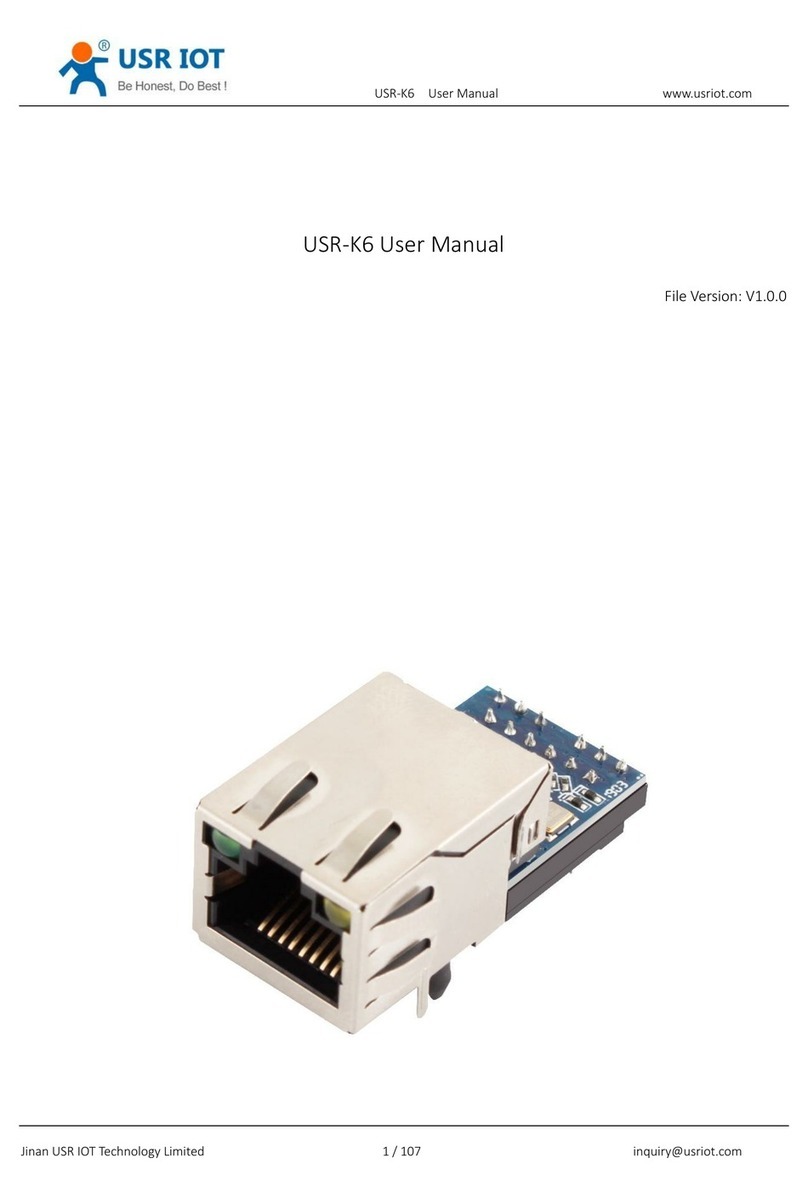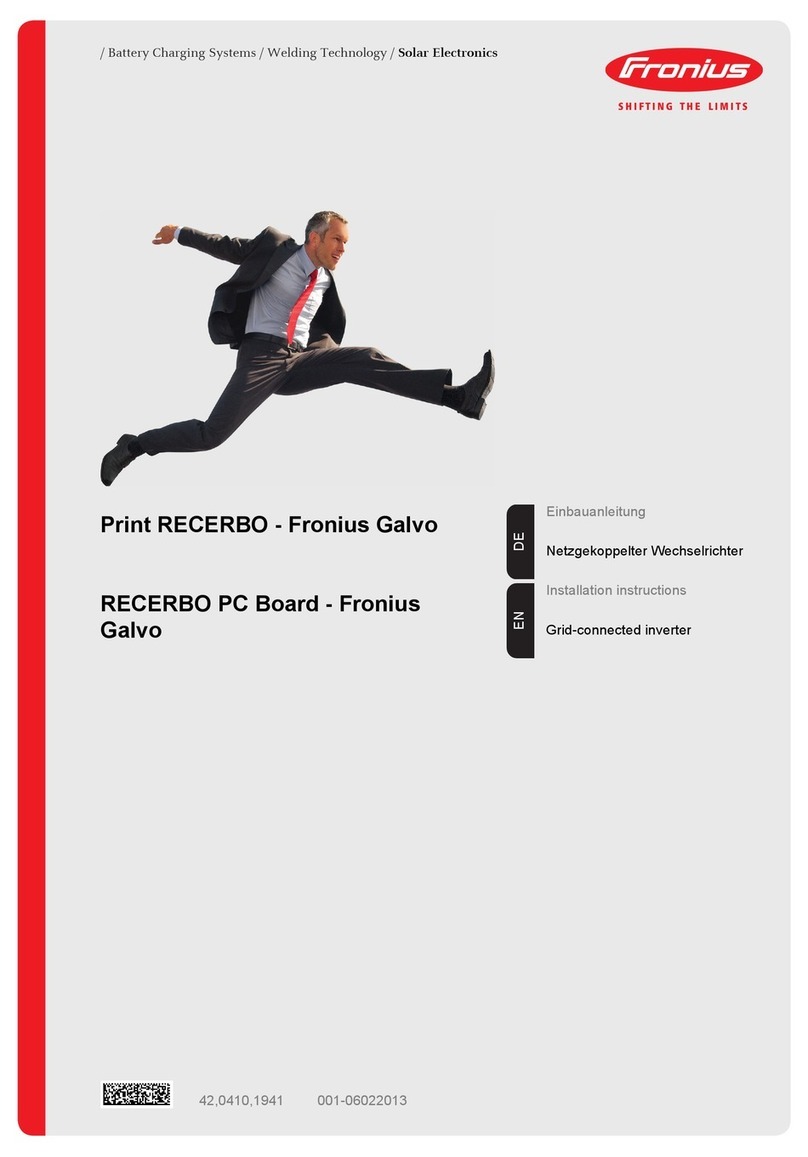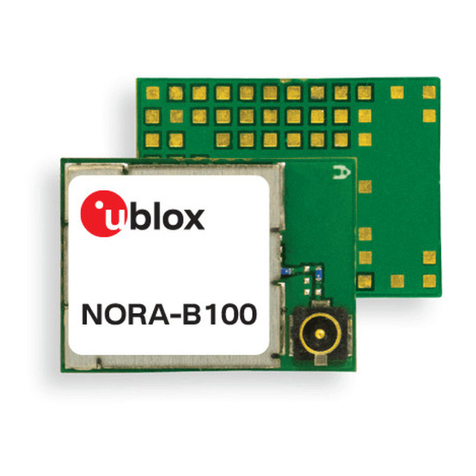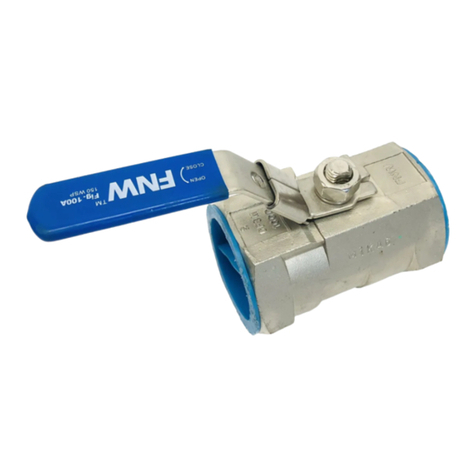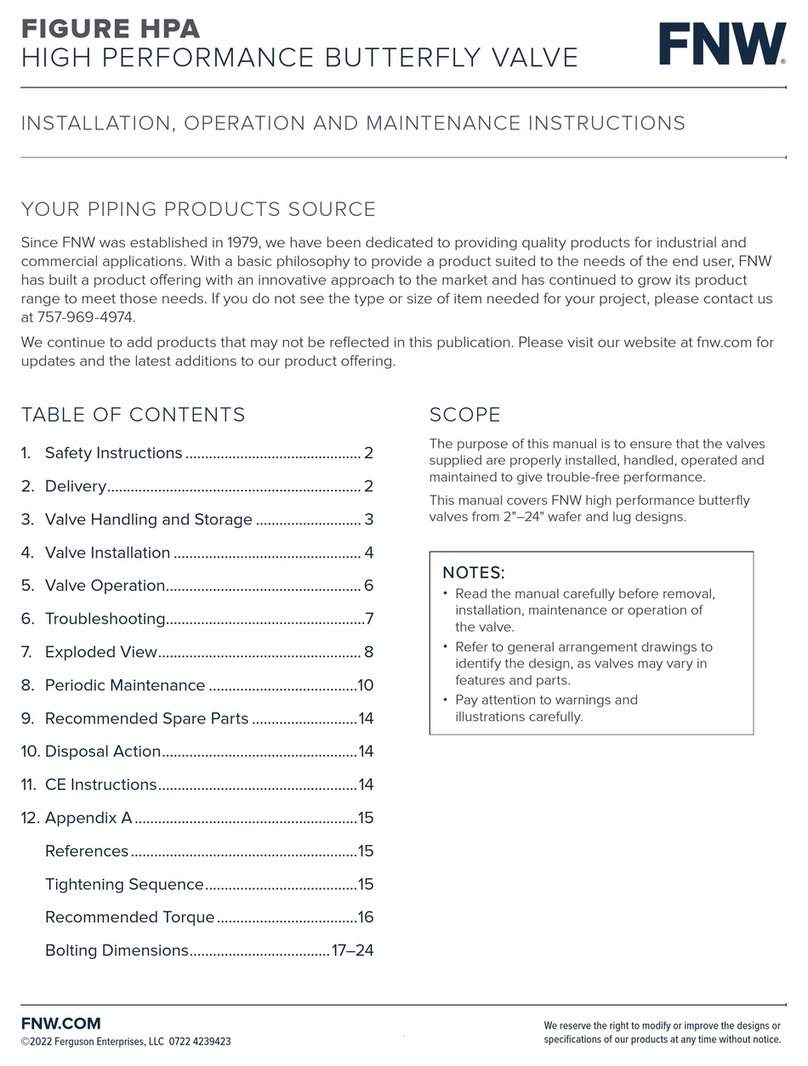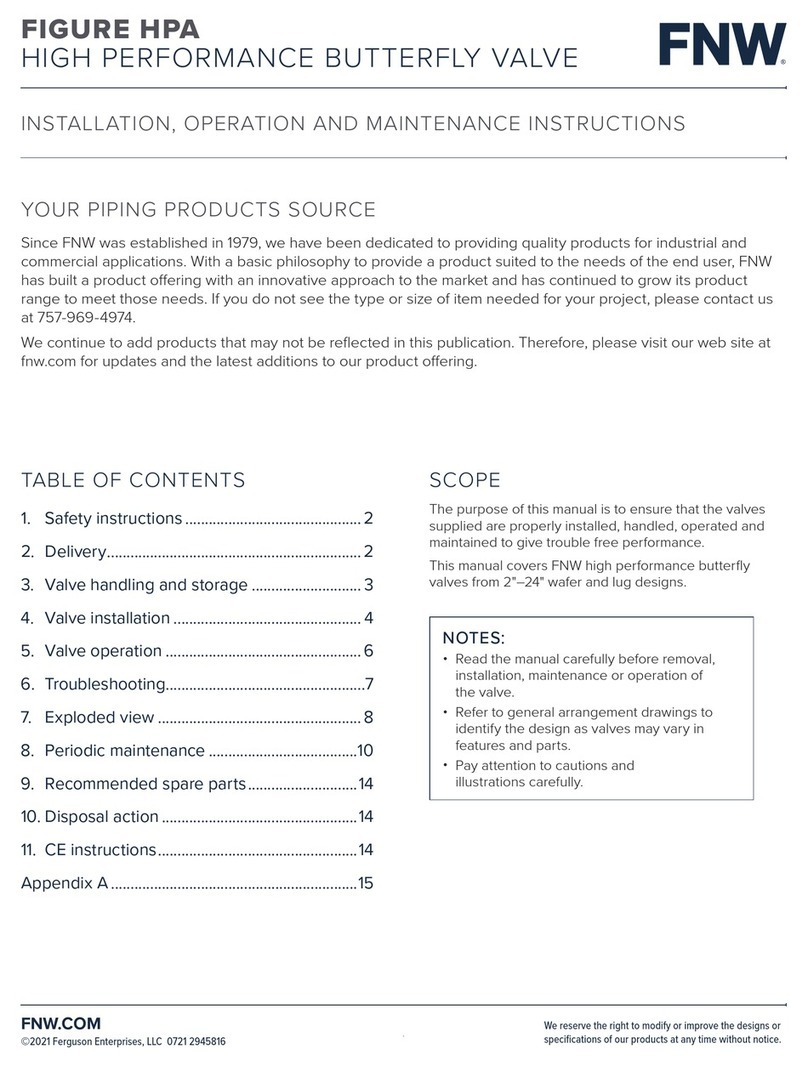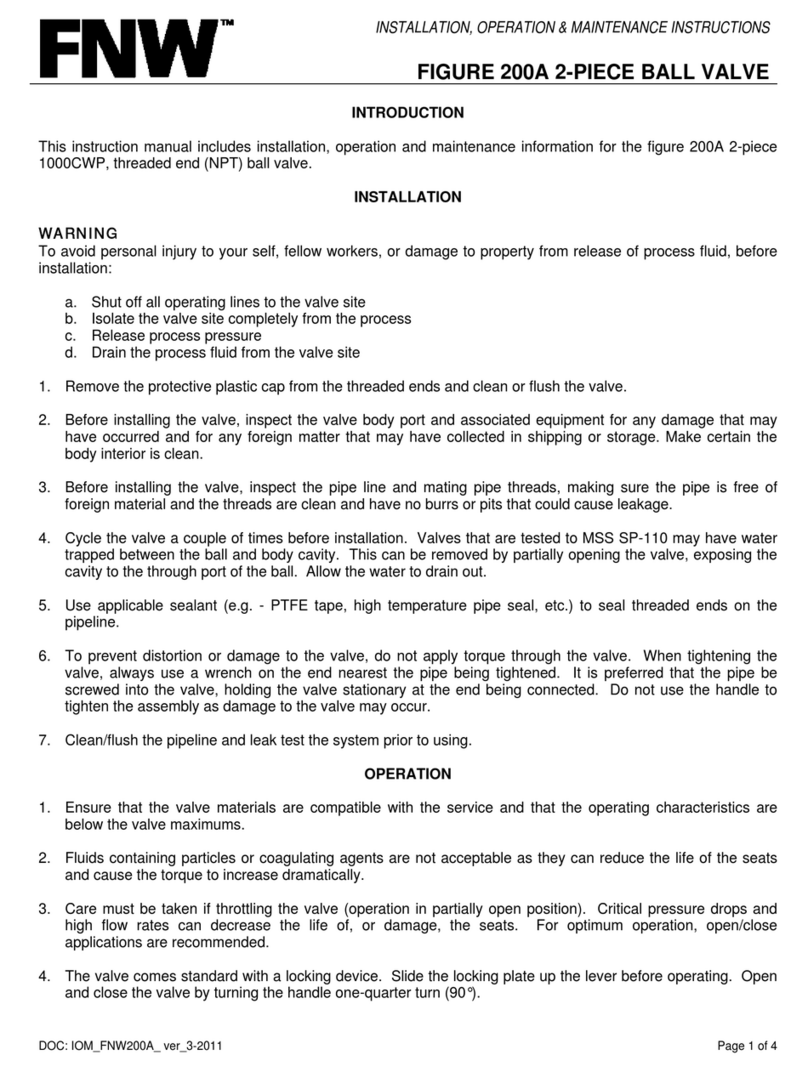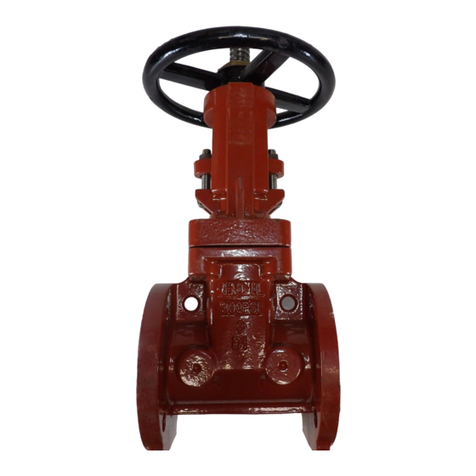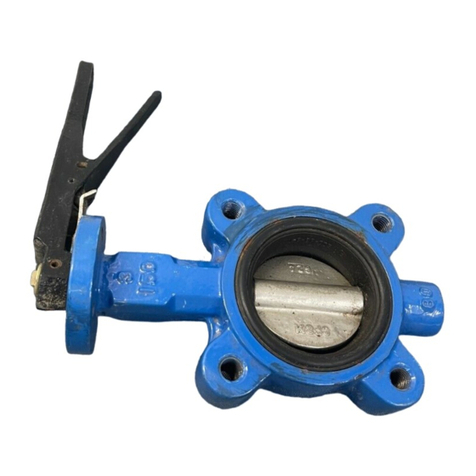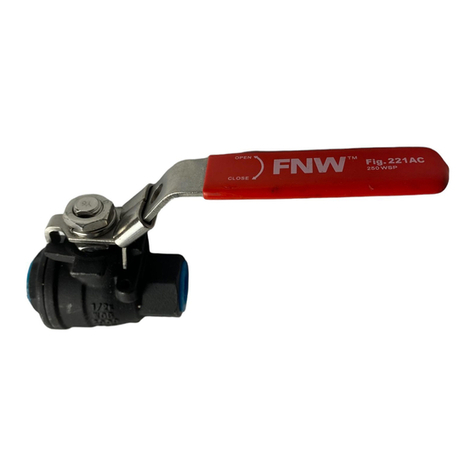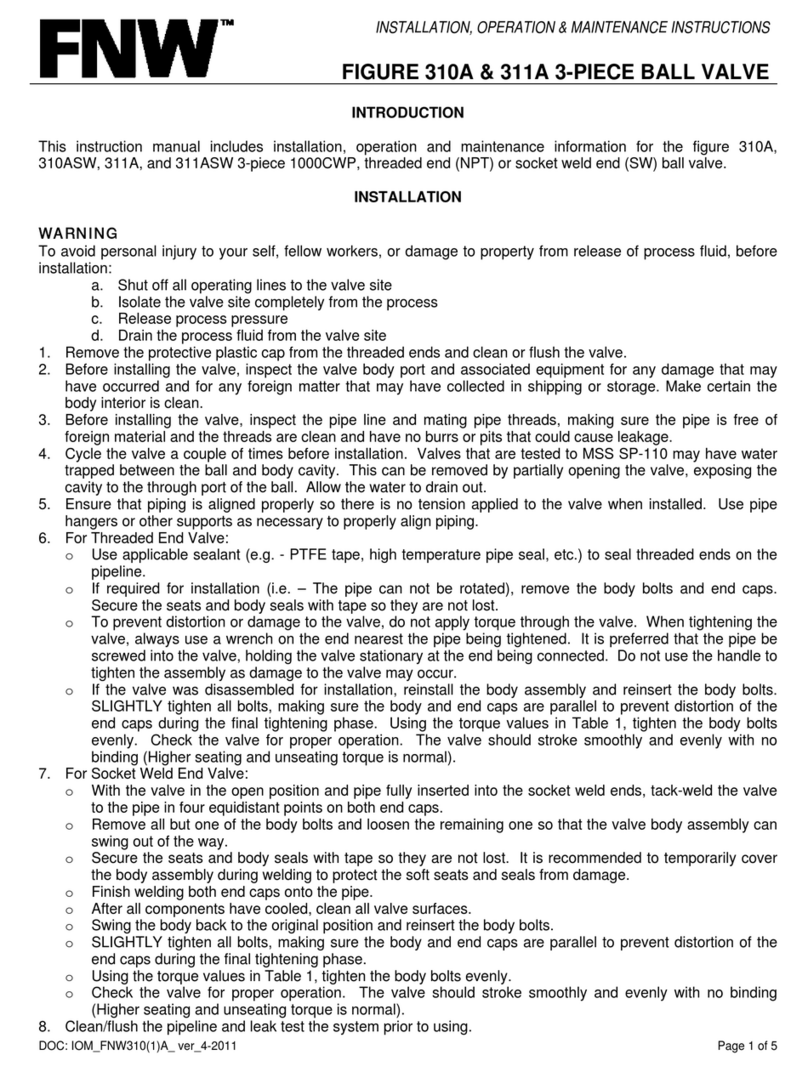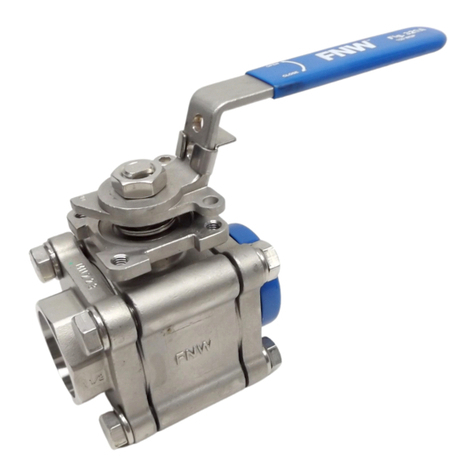
BALL VALVES
330A
3 PC SANITARY 400 CWP W/ CLAMP ENDS
INSTALLATION, OPERATION & MAINTENANCE INSTRUCTIONS
FNW.COM We reserve the right to modify or improve the designs or
specifications of our products at any time without notice.
©2023 Ferguson Enterprises, LLC 1023 5820509
WARRANTY
1.1 LIMITED WARRANTY: Subject to the limitations expressed herein, Seller warrants that products manufactured by
Seller shall be free from defects in design, material and workmanship under normal use for a period of one (1) year
from installation but in no case shall the warranty period extend longer than eighteen months from the date of sale.
This warranty is void for any damage caused by misuse, abuse, neglect, acts of God or improper installation. For the
purpose of this section, “Normal Use” means in strict accordance with the installation, operation and maintenance
manual. The warranty for all other products is provided by the original equipment manufacturer.
1.2 REMEDIES: Seller shall repair or replace, at its option, any non-conforming or otherwise defective product, upon
receipt of notice from Buyer during the Manufacturer’s warranty period at no additional charge. SELLER HEREBY
DISCLAIMS ALL OTHER EXPRESSED OR IMPLIED WARRANTIES, INCLUDING, WITHOUT LIMITATION, ALL IMPLIED
WARRANTIES OF MERCHANTABILITY AND FITNESS OR FITNESS FOR A PARTICULAR PURPOSE.
1.3 LIMITATION OF LIABILITY: UNDER NO CIRCUMSTANCES SHALL EITHER PARTY BE LIABLE TO THE OTHER FOR
INCIDENTAL, PUNITIVE, SPECIAL OR CONSEQUENTIAL DAMAGES OF ANY KIND. BUYER HEREBY ACKNOWLEDGES
AND AGREES THAT UNDER NO CIRCUMSTANCES, AND IN NO EVENT, SHALL SELLER'S LIABILITY, IF ANY, EXCEED
THE NET SALES PRICE OF THE DEFECTIVE PRODUCT(S) PURCHASED DURING THE PREVIOUS CONTRACT YEAR.
1.4 LABOR ALLOWANCE: Seller makes NO ADDITIONAL ALLOWANCE FOR THE LABOR OR EXPENSE OF REPAIRING
OR REPLACING DEFECTIVE PRODUCTS OR WORKMANSHIP OR DAMAGE RESULTING FROM THE SAME.
1.5 RECOMMENDATIONS BY SELLER: Seller may assist Buyer in selection decisions by providing information regarding
products that it manufactures and those manufactured by others. However, Buyer acknowledges that Buyer ultimately
chooses the product’s suitability for its particular use, as normally signified by the signature of Buyer’s technical
representative. Any recommendations made by Seller concerning the use, design, application or operation of the
products shall not be construed as representations or warranties, expressed or implied. Failure by Seller to make
recommendations or give advice to Buyer shall not impose any liability upon Seller.
EXCUSED PERFORMANCE: Seller will make a good faith effort to complete delivery of the products as indicated by Seller in writing, but
Seller assumes no responsibility or liability and will accept no back-charge for loss or damage due to delay or inability to deliver, caused
by acts of God, war, labor difficulties, accidents, inability to obtain materials, delays of carriers, contractors or suppliers or any other
causes of any kind whatever beyond the control of Seller. Under no circumstances shall Seller be liable for any special, consequential,
incidental, or indirect damages, losses, or expense (whether or not based on negligence) arising directly or indirectly from delays or
failure to give notice of delay.







